How to Fix Airplay Not Working Issues
Wonder why your AirPlay not working? Here are some common reasons and fixes to help you.
How to Fix Airplay Not Working Issues
Download and try AirPlay alternative – AnyMiro
- Fast response time within 10 ms and 60fps frame rate.
- A stunning visual experience with no color difference.
- Lag-free screen mirroring and 4k resolution.
Available for both Win & Mac
Have you ever used AirPlay? Or have you ever had issues while using AirPlay with your Apple devices?
Well, Airplay is a useful feature that allows you to wirelessly stream content from your iOS or iPadOS device to an AirPlay receiver like an Apple TV, Mac, or smart TV with a bigger screen.
However, it sometimes comes across as problematic. Users may look online for answers to know why their Airplay is not working and how to fix it.
In this article, we will cover common reasons for AirPlay issues and provide tips help to fix them. We will also recommend alternatives to Airplay that might work better for you. Let’s get started!
Table of ContentsHide
What is AirPlay
For those that don’t know, AirPlay is a proprietary wireless communication protocol stack developed by Apple Inc. that allows streaming between devices of audio, video, device screens, and photos, together with related metadata. Its power features make it a hot favorite among Apple users.

AirPlay video (left) and AirPlay audio (right)
While AirPlay is primarily associated with Apple devices, there are also options available for Windows users to enjoy the benefits of AirPlay.
You may have been using AirPlay for a while with some issues. Let’s look at the causes and solutions to these problems.
Why is My AirPlay Not Working?
If your AirPlay is not working, it may be due to the following reasons:
1. The Device is Incompatible with AirPlay
Not all devices are compatible with AirPlay. Check if your device supports Airplay and if the Apple TV you’re using is up to date. You can also try playing an audio or video file on your device to see if AirPlay works.
2. Devices Are Not Connected to the Same Wi-Fi Network
One of the most common reasons for AirPlay not working is the lack of connectivity between both devices.
If both of your devices are not connected to the same WiFi network, or if your Apple TV is connected to your Wi-Fi, but your phone is running on mobile data, the AirPlay may not work.
3. Distant Issues
If you’re too far away from the receiving device, there could be latency or buffering issues and your AirPlay will not work. Don’t forget that Airplay is available via a Wi-Fi network, so the farther away you are from your router, the weaker the signal will be.
If you’re trying to connect Airplay from your bedroom to your living room, you may need to move to a closer room.
4. Outdated Version of AirPlay
Some users may neglect version updates for devices and software. If your Apple system and AirPlay are outdated, it is likely to occur some issues.
5. Firewall Blocks Connections
Your Firewall may be blocking AirPlay. In fact, some Airplay receiving devices have security features that block connections from unknown devices. The device’s firewall will also block connections it does not recognize, including Airplay.
How to Fix AirPlay Not Working Problems
Now that we know the above reasons, let’s see how to fix them.
1. Check AirPlay Compatibility
AirPlay doesn’t work on all devices, so you’ll first need to check if your device supports the feature. Apple has published a list of compatible airplay devices, which includes the following:
Devices You Can Stream Audio From Using AirPlay
- iPhone, iPad, or iPod touch running iOS 11.4 or later
- Apple TV HD or Apple TV 4K running tvOS 11.4 or later
- HomePod running iOS 11.4 or later
- Mac with iTunes 12.8 or later OR macOS Catalina or later
- Windows PC with iTunes 12.8 or later
Devices You Can Stream Video From Using AirPlay
- iPhone, iPad, or iPod touch running iOS 12.3 or later
- Mac running macOS Mojave 10.14.5 or later
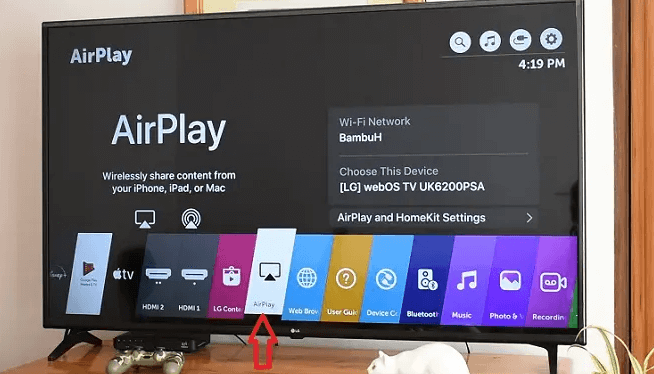
AirPlay is Used for Screen Casting
2. Connect both Devices to the Same Wi-Fi Network
You should connect both of your devices to the same Wi-Fi network to use Airplay successfully. If one of the devices is connected to Ethernet or mobile data, it should be changed to the W-iFi Network.
To view the network in use on iOS, go to Settings > Wi-Fi and view the current network name. To view the Wi-Fi network on macOS, click the Wi-Fi icon in the menu bar to see the name of the network being used.
Apple TV users can view the current network in the Settings > Network menu. If the TV uses an Ethernet connection, connect it to the same router that created the Wi-Fi connection.

Connect both Devices to the Same Wi-Fi Network
3. Keep the Devices close
Apple recommends keeping your devices as close to each other as possible. If your AirPlay devices are too far away, we suggest keeping them within Bluetooth range (33 feet or 10 meters) to increase connection strength.
4. Update AirPlay Version
All AirPlay devices should be using the latest software version. You may check out your device system and app version in the following ways:
On iOS, go to Settings > General > Software Update. To update macOS, go to System Preferences > Software Update.
On HomePod, open its settings in the Home app for iOS/iPadOS and select Software Update.
Apple TV users may update their devices by going to Settings > System > Software Update in tvOS.
AirPlay 2 allows users to stream music to multiple audio devices at once, but they need iOS 11.4 or later. Check to see if the iPhone or iPad has the most updated iOS.
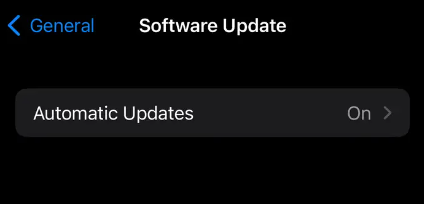
The Setting of Updates
5. Stop the Firewall from Restricting AirPlay
If you’re using a firewall, you can either turn off your Firewall or make sure AirPlay is allowed through it.
Here’s how to Disable the Firewall in MacOS Ventura
Step1. Go to the Apple menu and choose “System Settings”
Step 2. Click on “Network” in the sidebar list
Step 3. Click on “Firewall”
Step 4. Toggle the switch for Firewall to the OFF position
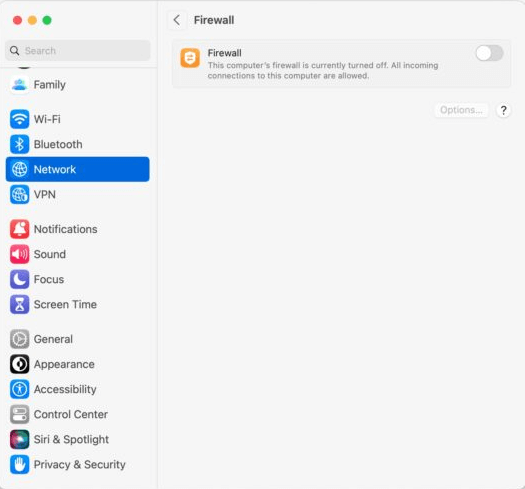
Turn off the Firewall Button
Now you turn off your Firewall, or you can go to Firewall Options and then uncheck “Block all incoming connections” to allow AirPlay
For other devices, check your Firewall’s documentation or contact their support page.
After you’ve been allowed to apply these security changes, try Airplay again.
AnyMiro: Best Alternative to AirPlay
If you need an alternative to AirPlay, AnyMiro is the best choice.
AnyMiro is a useful screen mirroring app supporting mirroring your phone screen to your PC with a USB cable or the same WiFi network. It’s simple and easy to use. You can enjoy the large screen experience with its help.
Let’s see features of AnyMiro and how to use it.
Key features:
- Stable and Smooth Screen Mirroring: AnyMiro ensures stable and smooth screen mirroring, providing a seamless connection between your Phone and PC. You can achieve up to 10 hours of mirroring without hassle.
- 4K Resolution Support: You can also enjoy the best color accuracy and stunning visual clarity with its support for 4K resolution. This feature particularly benefits mobile gamers and digital artists requiring precision and detail.
- Real-Time Video and Audio Sync: AnyMiro excels in synchronizing video and audio in real time. It has a great delay control of within ten milliseconds.
- Easy to Use: You will find it super easy to mirror a phone screen to a PC using AnyMiro. All it takes is the following methods to mirror your screen.
Steps for Mirroring iPhone to PC Using AnyMiro with USB
Step 1. Download and run AnyMiro on your PC.
Free Download for all windows & 100% safe Free Download for all mac & 100% safe
Free Download100% Clean & Safe
Step 2. Select mirror iPhone/iPad to enter iPhone mirroring.

Mirror iPhone to Computer
Step 3. Connect your iPhone to the PC with a lightning cable.
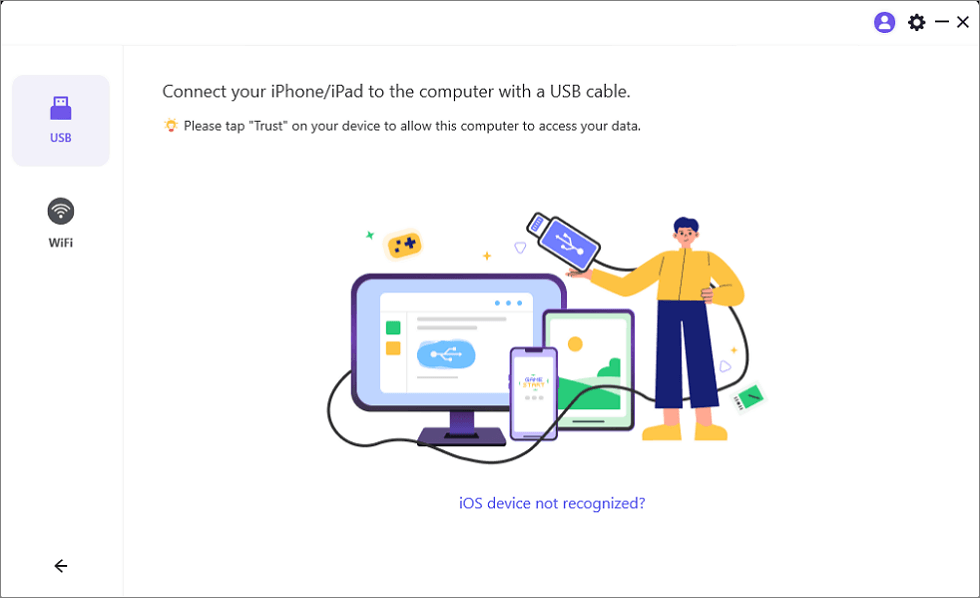
Mirror iOS Device to Computer via USB
Step 4. Tap “Trust” on your iPhone, and wait a few seconds, you can see the iPhone screen on the computer.
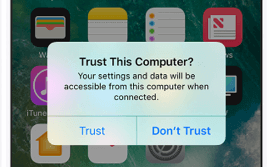
Trust Your Computer on iPhone
Steps for Mirroring iPhone to PC Using AnyMiro Wirelessly
Step 1. Download AnyMiro and enter the mirror iPhone/iPad tab.

Mirror iPhone to Computer
Step 2. Make sure your iPhone and PC are connected to the same WiFi.
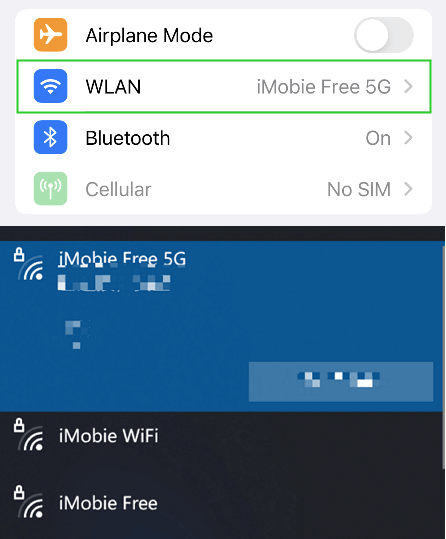
Connect to the Same WiFi
Step 3. Access your iPhone’s control center, tap the screen mirroring icon, then choose your PC from the device list.
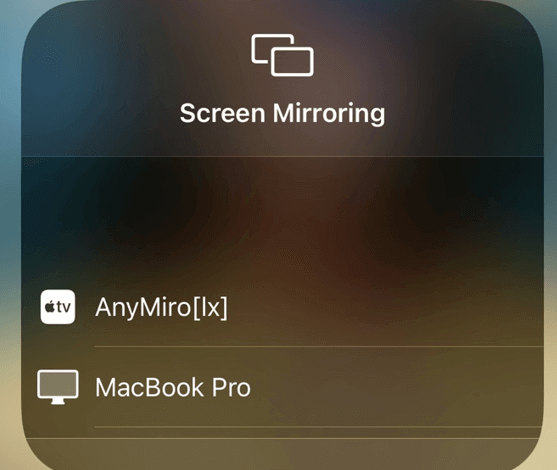
Select Your Computer from the List
FAQs
1. How do I get Apple AirPlay to work?
Stream video from your iPhone or iPad to a TV or Mac
Step 1. Connect your device to the same Wi-Fi network as your Apple TV, AirPlay-compatible smart TV, or Mac.
Step 2. Find the video that you want to stream.
Step 3. Tap AirPlay.
Step 4. Choose your TV or Mac from the list.
2. Why won’t Netflix play on AirPlay?
Airplay and Screen Mirroring are no longer supported by Netflix. To use your iPhone or iPad to watch Netflix on a TV, use a supported connection.
3. How do I reset my iPhone AirPlay?
Step 1. Open the Settings app on your iOS device.
Step 2. Tap General > Reset > Reset Network Settings.
Step 3. Enter your passcode, if prompted.
Step 4. Tap Reset Network Settings to confirm.
Your device will restart and all network settings will be reset.
Conclusion
AirPlay is a powerful tool that lets you quickly and easily mirror your device. You can cast video, audio, or pictures from one of your devices to any other AirPlay-compatible device.
However, some problems with AirPlay may occur, and you wonder “Why is my AirPlay not working?” You can use the methods recommended in this article to fix them, or you can use an alternative app AnyMiro. Hope you can resolve your issues with the fixes in this article.
AnyMiro – Real-Time Screen Mirroring Tool
Free download AnyMiro to enjoy a fast, stable, and smooth screen mirroring experience. You can mirror for better game playing, video watching, or live streaming mobile phone content.
Product-related questions? Contact Our Support Team to Get Quick Solution >

